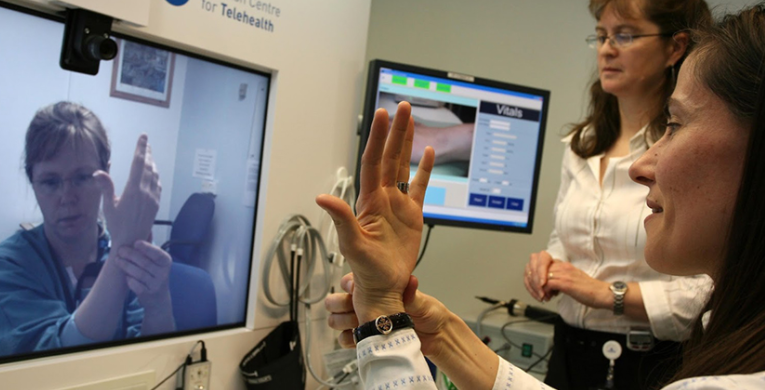
Why tele-health is an effective option for physiotherapy
Many businesses have pivoted to delivering online services because of the COVID-19 pandemic and from very early on Lane Cove physio has been dedicated to providing the best service possible digitally for all of our clients.
Where clinically appropriate, telehealth is a safe, effective and valuable tool to support patient care. It can be used for the purposes of:
- assessment and diagnosis
- intervention
- consultation
- follow up
- education
Is Tele-health as effective as physiotherapy in person?
Long before COVID-19, research has demonstrated clearly that Telerehabilitation results in:
- improved and timely access to rehabilitation services
- access to more specialised services close to home
- cost savings for both clients and service providers
- and a reduced carbon footprint associated with travel to health services
Physiotherapy delivered via Tele-health is also just as effective for patient outcomes as in person.
A 2019 Australian trial compared outpatient physiotherapy care via telerehabilitation to in-person physiotherapy after a total hip replacement. Assessing patients’ quality of life and Osteoarthritis Outcome Score at 6 weeks post-op, results showed that telehealth rehabilitation and in-person rehabilitation achieved the same outcome score. The group that received telerehabilitation scored higher in ease of attending appointments, and patients were also more likely to keep up with their home exercise programme.[1]
“Instead of relying on physical interaction, telerehabilitation promotes an active management approach involving the use of patient education, exercise, functional activity training, and behavioral and lifestyle changes. This method shifts the control of the treatment to the patient, making them accountable as their own “therapist,” with the clinician acting as coach and consultant. By following a treatment plan of self-monitoring and self-management, the patient is an active participant in the recovery process and develops greater control in managing their condition. Selfmanaging and self-monitoring have been shown to improve patient confidence, self-efficacy, self-regulation, and adherence in a range of clinical populations”.[2]
TeleHealth FAQs
What happens before my appointment?
You will be given all the information you need before the appointment:
- the date and time
- where you need to go (if it is not at home)
- who will attend
- how the technology will be set up
How do I set up a suitable space for my Tele-health appointment?
A quiet space free of distractions is important. Be aware of loud noises and turn off the TV and other appliances that are noisy. Lighting is also very important. Don’t sit with your back to a window as the light can flood the camera and you won’t be seen. It is recommended that you use the self-view feature when you log into the platform. Take notice of what you can see and rearrange furniture if required.
Can I use a Smartphone?
Yes. But, in our experience, a laptop on a firm spot works best. Some of the best TeleHealth appointments work when you can have both your laptop and smartphone available.
What should I Wear?
It is important to dress so that you can comfortably exercise and your physiotherapist can see the injury region. As a general rule, just dress how you would dress for an appointment at the clinic.
What Conditions Are Suitable For TeleHealth?
A Lane Cove physio will review your individual case to determine whether an online consultation is suitable for you. In our experience, we can successfully treat most conditions using TeleHealth Physiotherapy. Musculoskeletal conditions, post-operative rehab, educational programmes, workstation ergonomics, injury triage and exercise-based rehabilitation programs can all be run successfully via tele-health.
Book Your TeleHealth Physiotherapy Appointment with Lane Cove physio
The COVID-19 pandemic shouldn’t derail your rehabilitation and physiotherapy goals. For more information on telehealth physiotherapy and the services available, contact Lane Cove Physio on (02) 9428 5772 or at [email protected]
[1] Nelson M, Bourke M, Crossley K, Russell T. Telerehabilitation is non-inferior to usual care following total hip replacement – a randomized controlled non-inferiority trial. Physiotherapy. 2020 Jun;107:19-27. DOI: 10.1016/j.physio.2019.06.006.
[2]Pugliese M, Wolff A. The Value of Communication, Education, and Self-Management in Providing Guideline-Based Care: Lessons Learned from Musculoskeletal Telerehabilitation During the COVID-19 Crisis [published online ahead of print, 2020 Aug 3]. HSS J. 2020;1-4. doi:10.1007/s11420-020-09784-2



